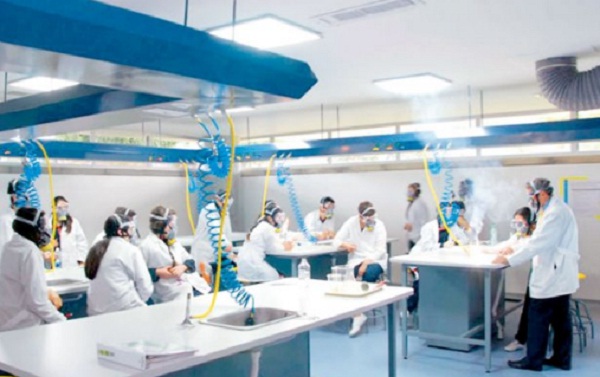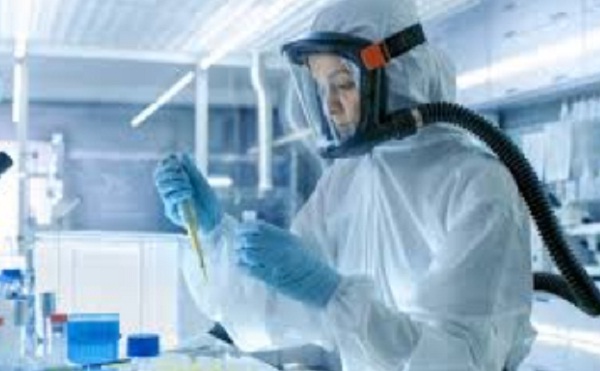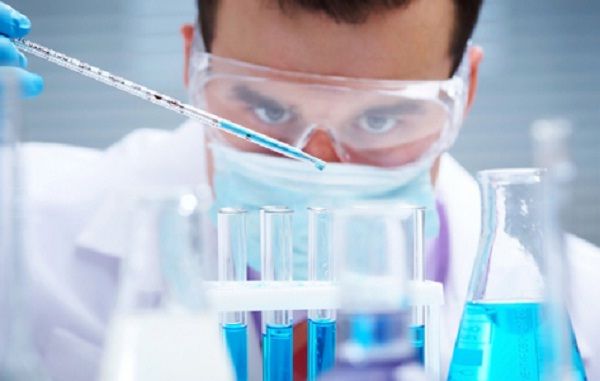Safety in the chemical laboratory is important and depends on the activity carried out on the premises. It involves the use of materials, instruments, equipment that warrants knowledge of their function, uses. But it also involves risks of inhalation of gases or vapors, burns and irritations, fires or explosions among others. Hence the need to preserve human and environmental health. For this reason it is essential to review, control, apply the different rules of protection, security in the place.
What is safety in the chemical laboratory?
The word security comes from the verb seguro, which means safely, free from all harm, danger, risk, to be in a safe place. Safety in the chemical laboratory is equal to putting safety standards into practice. They seek to avoid, control, reduce risk factors - accidents that can occur on the spot.
Attacking the health – safety of people. Their activation is of great importance because they help to reduce accidents on the site and in the community. It is focused according to chemistry by the risks of the products, by their physicochemical, toxic, utility, location characteristics. According to their symbols, by the pictograms on the labels.
Where its use, handling, transport and storage are prevented from the type of danger.
Safety Standards in the Chemical Laboratory
It implies the safety rules in the chemical laboratory, general care to be followed within the laboratory for which the following must be done. It is forbidden to eat, smoke, drink, run inside the place. Be aware of not blocking the circulation spaces such as the entrance, exit, corridors with machinery and instruments, materials.
The operation of only the equipment is not allowed. It is recommended to know the areas where the security elements that exist in the enclosure are located. The alarm, the fire extinguisher, emergency exits. Maintain order by keeping used items in place and cleaning the work area. Work as a couple.
Wear comfortable clothes with rubber shoes, do not wear scarves or ties, chain, rings, watch, hair tied up, always wear a lab coat. Close the gas valve. Being extremely careful in the handling of equipment due to electric shocks can cause death, due to the risk of shock. Place high voltage hazard indicators.
Basic security measures
It is important to mention that there is the classification for these standards which are, the personal, for the use of products and instruments, in waste and emergency. Food intake should be limited. Put on your work robe to take care of the clothes. You store personal clothes or accessories inside a looker.
It carries clothes with easy mobility. Keep only the notebook at hand in the work area. Constantly wash your hands. If you have a wound on your hands, cover it up. The location of the medicine cabinet should be known in case of an accident. Do not handle any device that you do not know its use, rules and operation.
Pay special attention to glass materials. Look carefully at the danger signs on the chemical bottles. If you accidentally get splashed during the experience, quickly wash the area. Handling heat source can not be near flammable substances.
For heating instrument use the wooden clamp. Do not look into a container that absorbs heat directly. Research how to manipulate acids and bases. When handling containers, do not smell or vacuum the contents or leave them uncovered.


Emergency measures
In case of emergency, close the gas valve. Leave the place in an orderly manner. Locate emergency equipment such as showers, sinks, fire extinguishers, blankets, spill absorbers. For work with chemicals, avoid contact with the skin. The pipette is not used with the mouth.
Use funnels to transfer liquids. In the preparation of acidic solutions move the liquid gently. To get the smell of a substance and identify it use the palm of your hand. When handling acids, use caution. To dilute them, place the solvent first and then the acid.
Storage
According to the Germans it means that, it is the place where products that have daily use or for an undetermined time are disposed of. He also suggests that it may be located in a building, where you will have a room for such products. A separate outdoor area from the warehouse where there will be stored chemicals.
under the designation (TRGS 514/ TRGS 515) where the largest amount of hazardous materials will be available. It consists of having both the chemical materials and the instruments in one place, in perfect order for their handling. The gas cabinet is a space for accommodating reagents in gaseous form.
They will be placed outside the laboratory because in case of fire they can explode. They must be separated according to the type of gas it contains. The empty ones away from the full ones. The room where they are stored should be ventilated and away from the heat source. Usually the danger is indicated on the label of the containers.
All flammable products must be stored in a suitable place and separated from acids, bases, oxidizing reagents. Flammable liquids are not stored in glass containers but in plastic.
Storage of glass materials and connections
It refers to the rules for the handling of glass material within the laboratory. It starts with checking the quality of the glass, whether it withstands the work to which it will be subjected. That have factory defects or are beaten, fluted, fractured are discarded. Check the work counter so as not to leave used slides abandoned.
When two containers are locked, introduce them in hot- cold water to achieve separation. Therefore, protective lenses should be used. The large material is arranged horizontally and in space closer to the floor. The temperature of the sterilized containers should be checked before taking it to be stored.


Accident prevention
When proceeding to close glass containers, do not force the jar, bottle, stopcocks, connectors with your hands. Use gloves or a cloth before applying force. To wash the containers do not use water pressure. If they have acidic or toxic residues, use latex gloves, safety glasses. Do not use substances that scratch the glass surface during washing.
Also do not use the thermometer above its limit.When the glass material is exposed to heat, it must be resistant. When separating from the heat do not put it on cold or damp countertops. Containers and connections stored in display cases should not be subjected to temperature changes. Glass materials are not placed in the hot stained glass window.
When heated in an experiment, they are not exposed directly to the flame. Do not grab containers, connectors or other that have been subjected to heat with a bare hand. Use the appropriate container to dilute strong acids such as erlemeyer, beaker.
Conducting experiments with materials of glass
This will be to explain some important points when making an assembly with glass materials. Where emphasis must be placed on the formation of the apparatus that is being articulated little by little by parts. Especially the connections that are those that allow the union of all the parts that make up the device for experimentation.
Apart from these, fasteners linked to the universal support are also used, such as the metal ring, to achieve the stability of the device. For protection and uniformity of heating as the metal grid. In practice, the experiment should not be abandoned. There are assemblies such as reflux, distillation, boiling point where these types of experiences are carried out. the use of glass materials is manifold.
Safety in the chemical laboratory is important to safeguard the health of people working in the research area. Consult this information as many times as you need.

